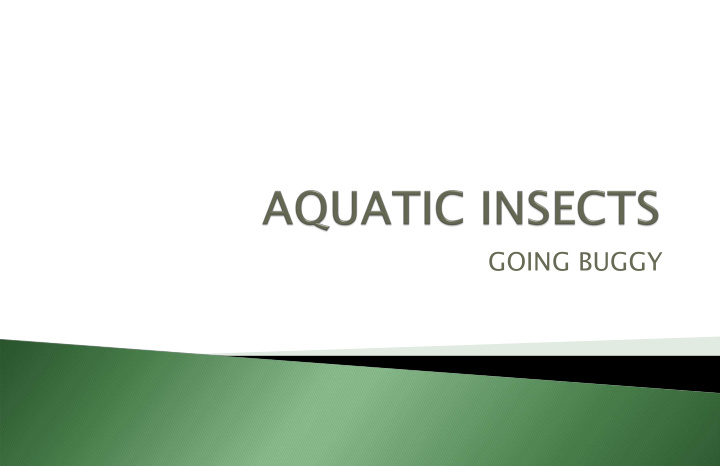



GOING BUGGY
• Builds its own home (case) by gluing stream pebbles or sticks together with a silk it makes • named after 15th century ribbon (caddice) sellers who pinned many ribbons to coat • Female lays up to 800 eggs
AQUATIC INSECTS What are they AND what are they good for?
WHAT ARE THEY? We all know what they They breakdown plant and animal matter in the are, right? water. ◦ They are insects! Serve as food for fish, ◦ That live in water or amphibians, water birds near water Are used to determine ◦ Usually found in clean the health of water and polluted water So they are GOOD bugs WHAT ARE THEY GOOD FOR?
Explain to the students that they will be collecting and studying aquatic insects as INDICATORS OF WATER QUALITY
On floating vegetation Look at the picture, where are some places Submerged vegetation in the pond that we can Under rocks & loose look for aquatic insects? rocks In the soil On top of the water On, in, or near moist banks
• The chart you are looking at shows that some aquatic insects are very sensitive to the stresses of pollution, habitat modification, severe natural events, while others are more tolerant. • Looking at the chart, what are some indicators of a degraded stream or water supply?
The macroinvertebrates are divided into groups based on their tolerance of poor water conditions. Group 1 – indicators of good water quality. These have low tolerance of pollutants.
The macroinvertebrates are divided into groups based on their tolerance of poor water conditions. Group 2 – indicators of fair water quality. These have moderate tolerance of pollutants.
The macroinvertebrates are divided into groups based on their tolerance of poor water conditions. Group 3 – indicators of poor water quality. These have high tolerance of pollutants.
If the pond has water – ◦ have a volunteer fill a bucket or buckets with pond water and bring back to the station If the pond does not have water – ◦ Give each student the aquatic insects ID card and magnifier. ◦ Have them tell you where in and around the pond they can find each aquatic insect on the card.
Recommend
More recommend